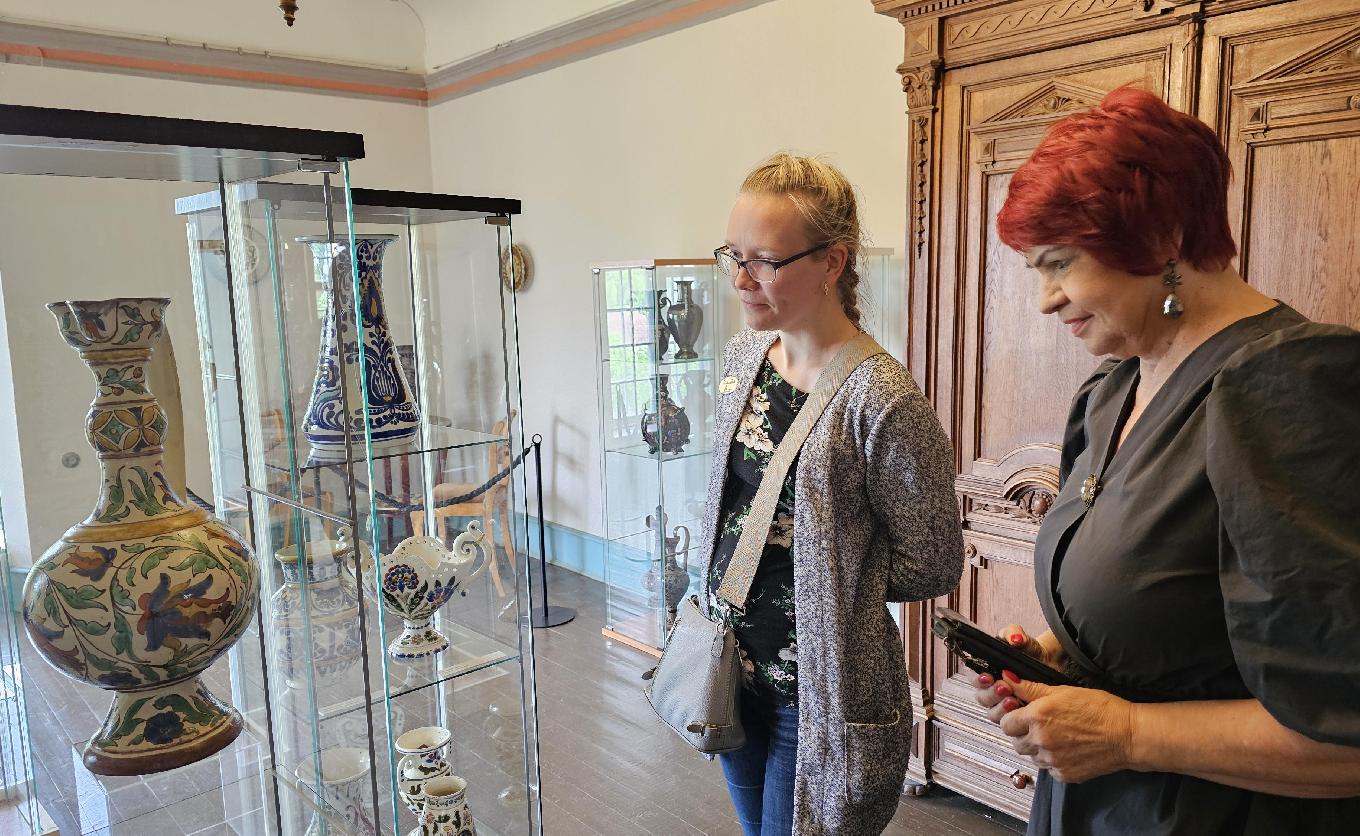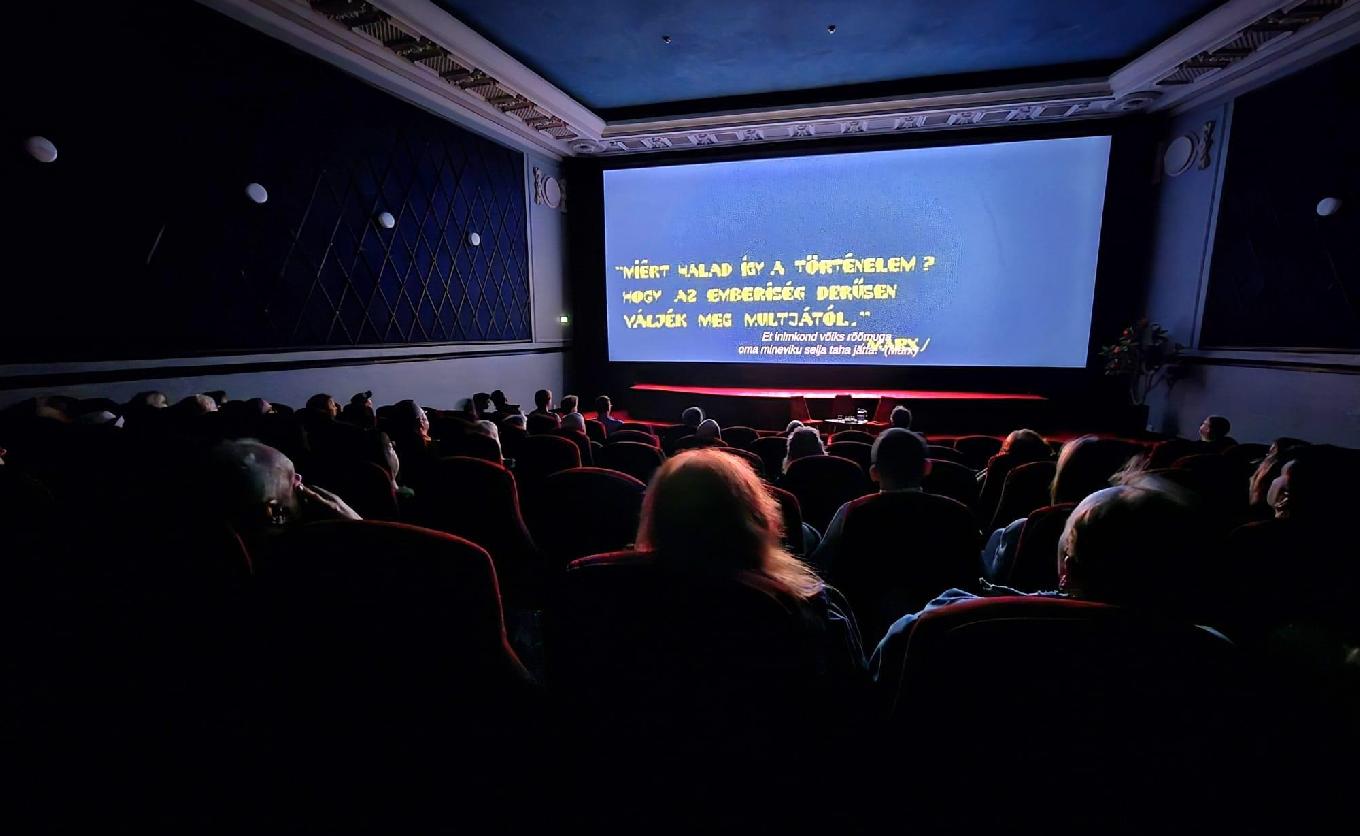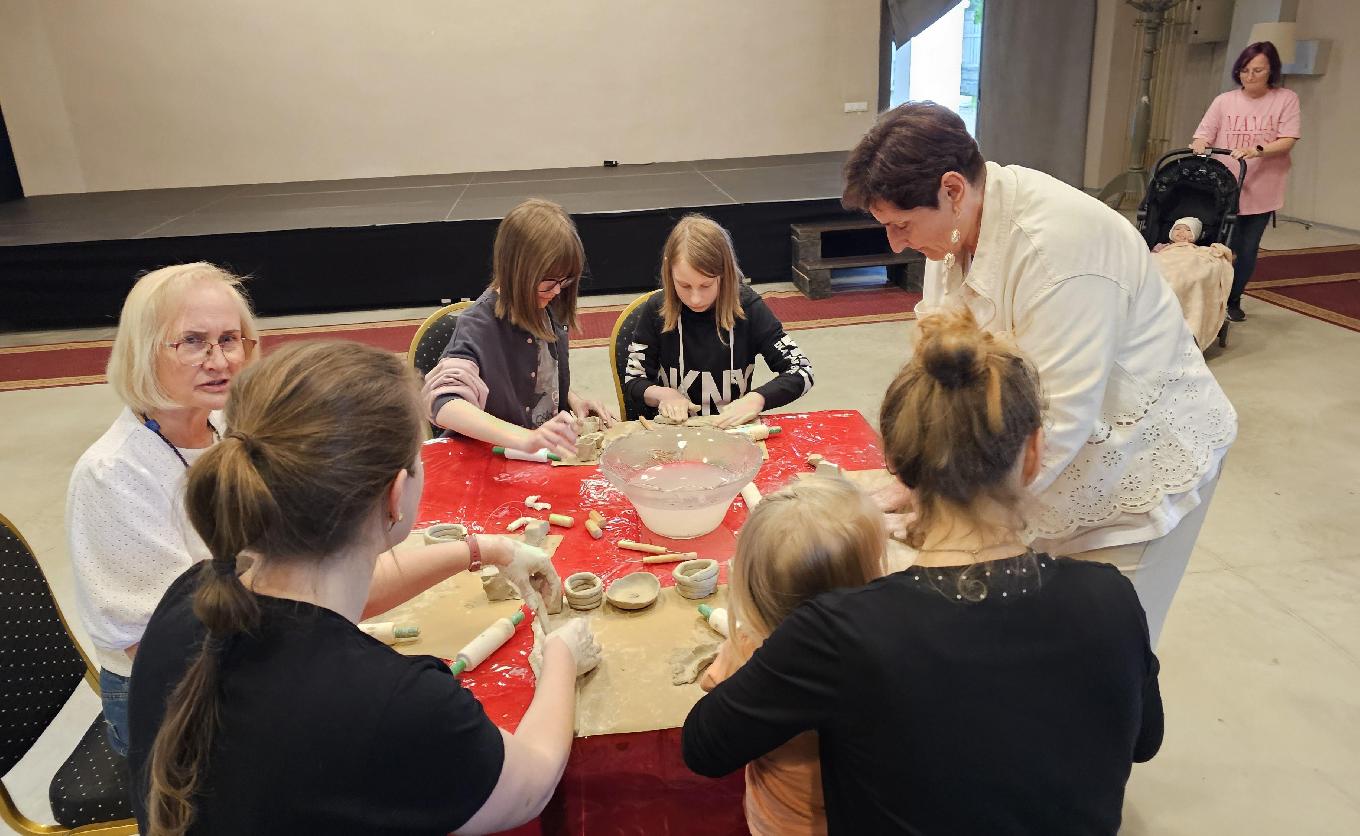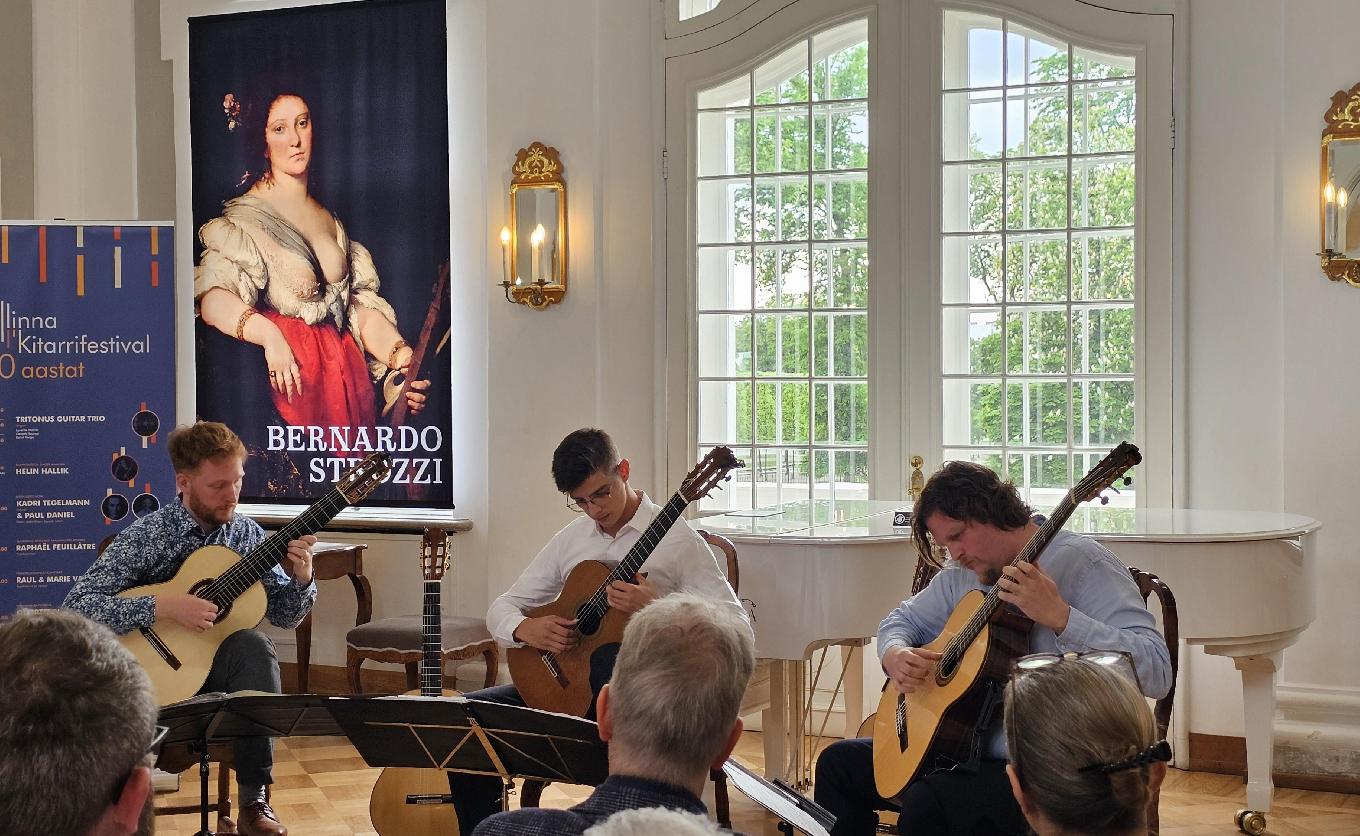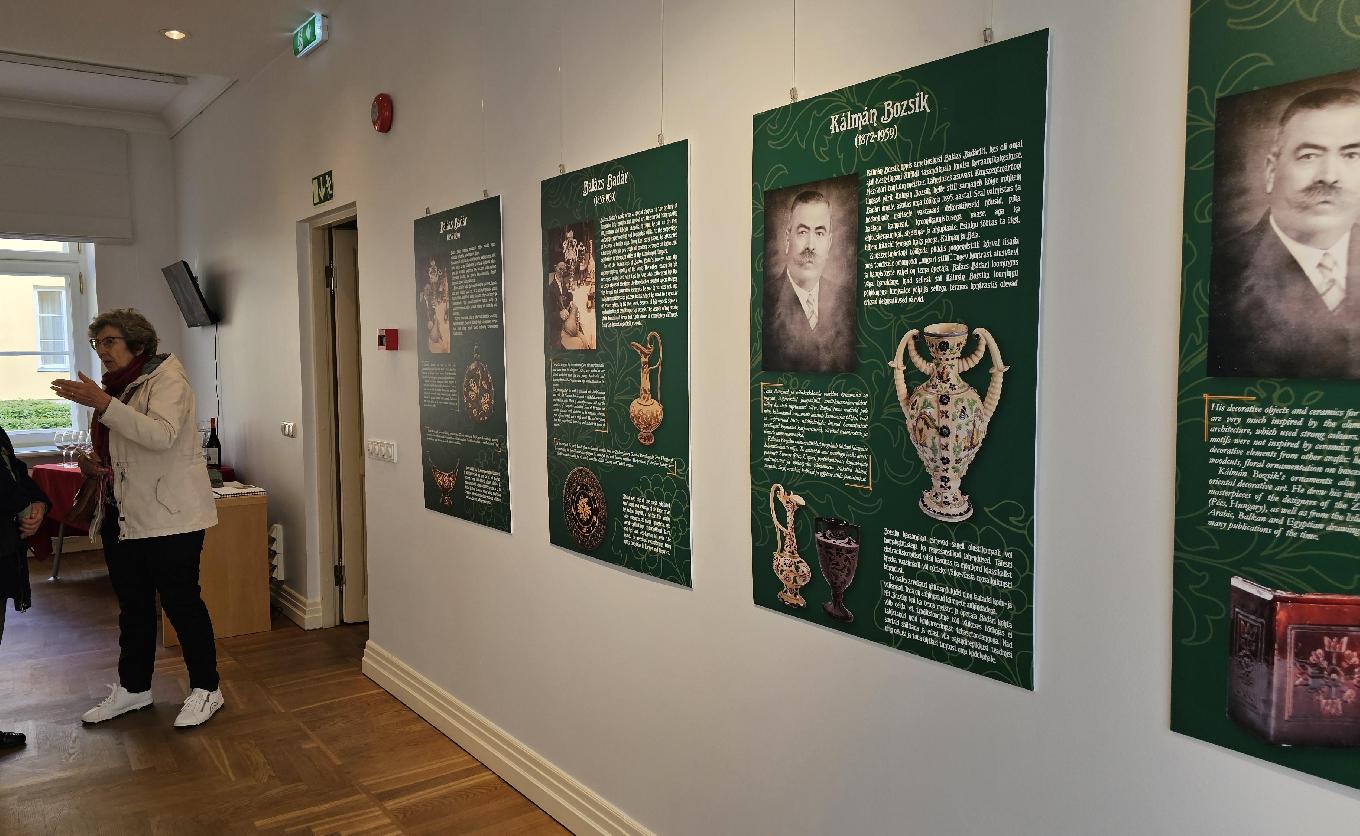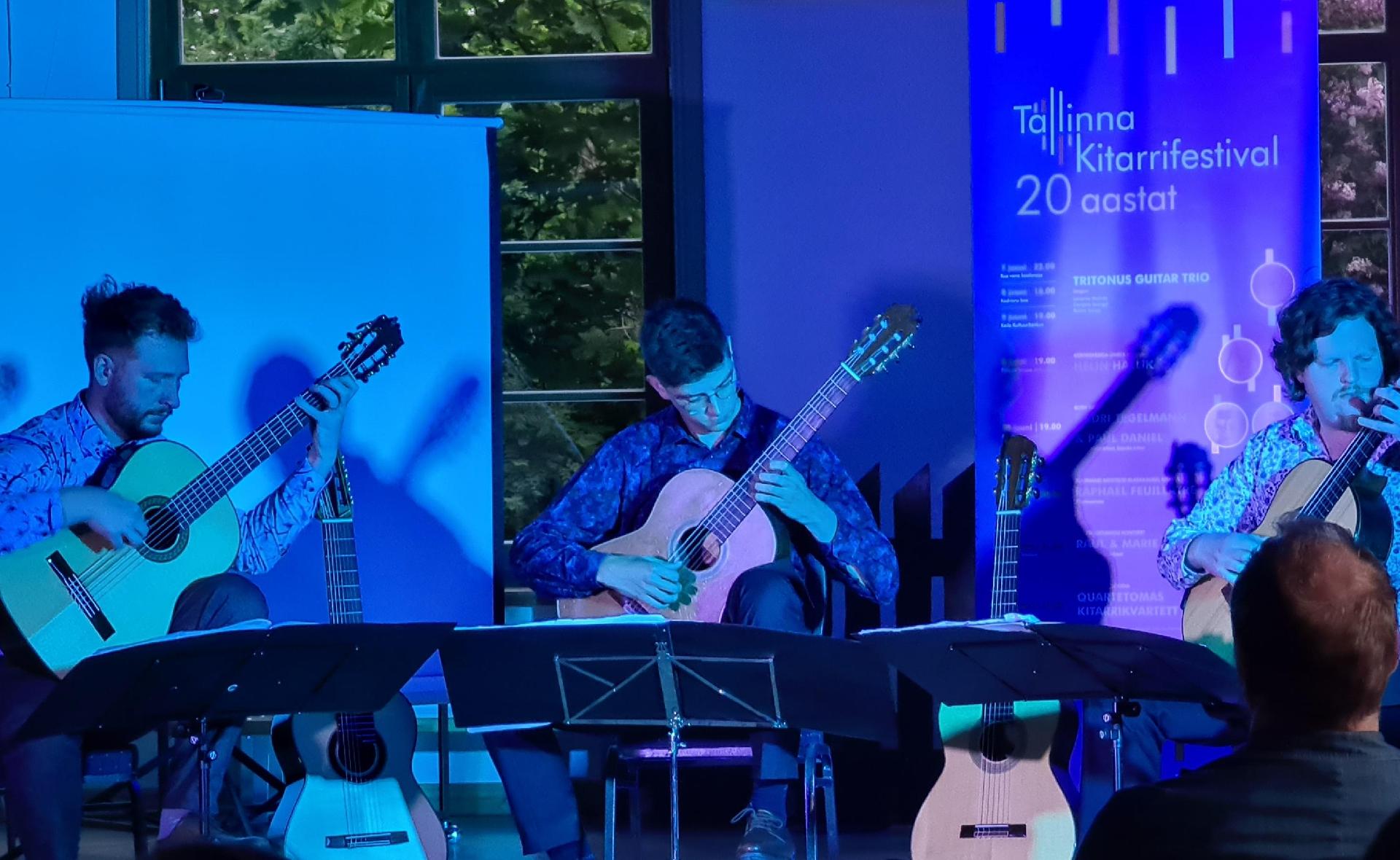
Hungarian cultural programs in Estonia
The Liszt Institute in Tallinn recently opened its exhibition “From Earth and Heart: Folk Art Nouveau Ceramics from Hungary” at two locations: the Palmse Manor and Open-Air Museum, as well as at the institute itself. In addition to the highly successful exhibition, the institute commemorated the Day of National Unity and supported the Hungarian Tritonius Guitar Trio's concerts across Estonia. At the beginning of the summer, they highlighted Hungarian gastronomy with seaside panels showcasing the history of Goulash and also screened Péter Bacsó’s film The Witness with Estonian subtitles.
On June 5, the exhibition “From Earth and Heart: Folk Art Nouveau Ceramics from Hungary”, organized by the Liszt Institute, opened at the Palmse Manor and Open-Air Museum. The ceramics on display, sourced from Hungarian museums, were created between 1890 and 1940 in two small towns on the Great Hungarian Plain: in Mezőtúr, in the workshop of Balázs Badár, and in Kunszentmárton, by the hand of Kálmán Bozsik. These two artists occupy a unique place in the history of Hungarian ceramic art. The objects bear the stylistic hallmarks of Art Nouveau, yet their distinctiveness lies in the visible influence of Hungarian folk art traditions. Balázs Badár and Kálmán Bozsik were among the most frequently exhibited craftsmen and applied artists of their era. It is difficult to enumerate all the countries where their works appeared at industrial and world expos, as well as international showcases, where they received numerous awards — including in Paris, Milan and Brussels. Today, it is almost unimaginable how widely known and renowned they once were. They received orders for their uniquely shaped and beautifully decorated ceramics from nearly every country in Europe and the Americas. The exhibition at Palmse Manor offers a selection of their finest pieces. On the occasion of the opening, the institute also organized a craft workshop and pottery wheel demonstration related to the exhibition. The program was led by Zsolt Pusztai, Director of the Túri Pottery Museum, with the collaboration of Gabriella Pusztai, Deputy Director of the Kunszentmárton Cultural Center. The exhibition opened the following day at the Liszt Institute in Tallinn as well, again accompanied by a hands-on craft workshop.
On June 7, the Liszt Institute commemorated the Day of National Unity in a dignified manner, in partnership with the Hungarian Embassy in Tallinn and the Mihály Munkácsy Association, which brings together Hungarians living in Estonia. Marking the anniversary of the Treaty of Trianon, imposed on Hungary after the First World War, nearly sixty guests gathered to remember this historical ocassion. The open-air event was attended mainly by families with children, for whom the institute organized a variety of engaging activities with the help of Eszter Kiss, Dóra Szoó and Krisztián Csató.
The Tritonus Guitar Trio (Levente Molnár, Gergely Szurgyi and Bálint Varga) gave concerts at three venues in Estonia, organized by the Liszt Institute. On June 7, they performed to great acclaim in two towns near Tallinn, Jüri and Keila, followed by a performance the next day at the Tallinn Guitar Festival. This year marked the 20th edition of the Tallinn Guitar Festival, which has hosted several Hungarian performers over the years — most recently guitarist Borbála Seres. This year, for the second time, the festival was opened by the outstanding performance of the Tritonus Guitar Trio. The concert took place in the spectacular 18th-century Kadriorg Palace, built in Baroque style, located in the seaside Pirita district of the Estonian capital. The guitar trio enjoyed tremendous success at all three venues.
As part of last year’s Hungarian Days in Pärnu, the Liszt Institute opened its bilingual (Estonian-English) exhibition on the history of Goulash soup, which was also a great success in the city of Rakvere last autumn. This year, the exhibition panels presenting the history of Hungarian Goulash were displayed in Tallinn’s seaside Pirita district, at an open-air venue near the sea, where they attracted interest from both Estonian visitors and tourists. The exhibition was on view in Tallinn from May 26 for nearly a month.
On June 17, at the request of the Estonian Institute of Historical Memory, the Liszt Institute in Tallinn organized a screening of Péter Bacsó’s film The Witness at the Sõprus Cinema. Before the screening, the head of the institute, János Tischler — who has spent decades researching the international reception of the 1956 Hungarian Revolution — gave an introduction providing historical context for the film. His approximately 20-minute lecture was met with great appreciation. Following the screening, attendees had the opportunity to take part in a panel discussion. In addition to organizing the event, the institute also took responsibility for proofreading the Estonian subtitles. Overall, the film screening proved to be a highly successful and valuable collaboration, which was very well received by the audience.
The Finno-Ugric Film Festival was held for the first time in 2014. Its aim is to spark interest in feature films and experimental works made in Finno-Ugric languages or presenting Finno-Ugric themes. On June 22, the Estonian band Ruhnu Saare Lood ja Laulud performed at the event, featuring a significant segment of Hungarian folk music in their program. The event, supported by the Liszt Institute in Tallinn, was met with prolonged applause from the audience.

